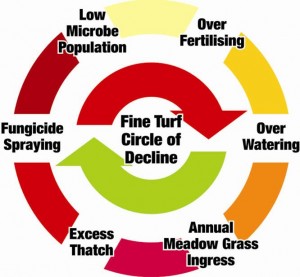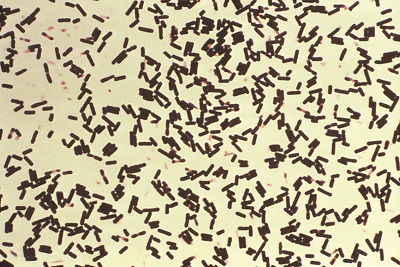Soil microorganisms exist in vast numbers in the soil as long as there is a carbon source to provide them with energy.
The microbial population is made up of 6 distinct groups of organisms. In order of average population size (biggest first) there are Bacteria, Actinomycetes, Fungi, Algae, Protozoa and Nematodes.
The actual biomass of each of these organisms can be confusing at first due to the difference in size of the individuals. For example, due to their small size, Bacteria contribute a smaller overall biomass than Actinomycetes, even though these organisms are a factor of 10 times smaller in number. Due to these Actinomycetes being larger as individuals they contribute a similar biomass to the much more abundant Bacteria.
Fungus population numbers tend to be smaller but are usually the dominant presence in the microbial biomass where the soil is left undisturbed. Bacteria, Actinomycetes and Protozoa are hardier making them more able to tolerate disturbance of the soil than fungal populations. Bowling greens are probably a half way house; not being subjected to excessive tillage, but not entirely undisturbed either.
Here’s the really interesting bit:
There are more microbes in a teaspoon of soil than there are people on the earth!
The Circle of Decline is largely predicated on poor soil microbial populations due to inappropriate maintenance practices.

Microbes and plant nutrition
Soil microbes are abundant in the soil and are vital to the recycling of organic matter in the soil to provide nutrition for plants. The smallest and most hardy of these are the Bacteria which can survive under the harshest of conditions and are especially resistant to tillage or the mechanical cultivation of the soil as happens in the top 100-150mm of the bowling green through aeration practices. Fungi are more specialised and need a constant food source meaning that they survive and thrive more readily in uncultivated soils.
Soil organic matter consists of a mix of living microorganisms, dead leaves, shoots and roots (fresh residues), and the older decomposed plant material called humus. Fresh plant or animal material provides an ideal food source for microbes and is composed of easily digested sugars and proteins.
Soil cultivation through aeration (incorporating oxygen) destroys soil organic matter through oxidation and allows bacteria and other microbes to rapidly decompose organic residues. Warmer soil and the presence of moisture speeds up this process by supporting an increased microbial populations in the soil. Organic matter with a low carbon to nitrogen (C:N) ratio (green material) is easily decomposed and nutrients are quickly released (4 to 8 weeks), while organic matter with a high C:N ratio (woody material like roots, rhizomes and stolons) decomposes more slowly and the microbes will tie up soil nitrogen to decompose the residues. Protozoa and nematodes consume other microbes in the soil and release the nitrogen as ammonia, which becomes available to other microorganisms or is absorbed by plant roots.
Bacteria Graphic http://www.soils4teachers.org/


